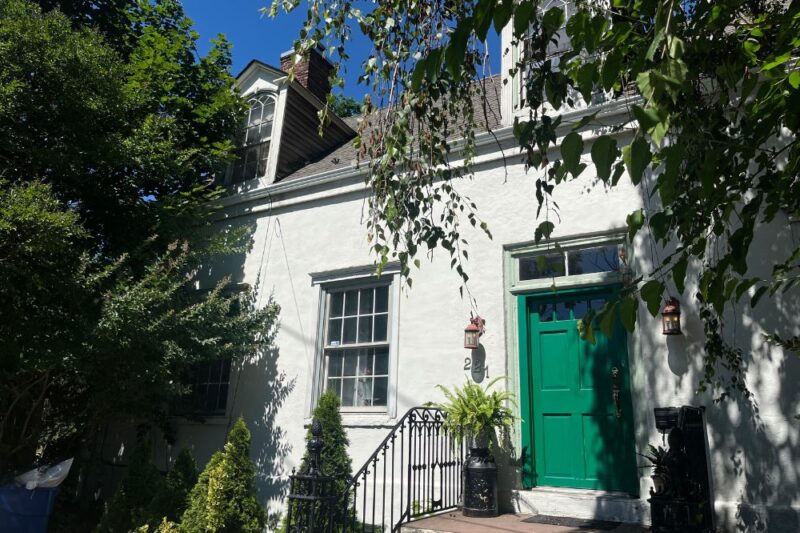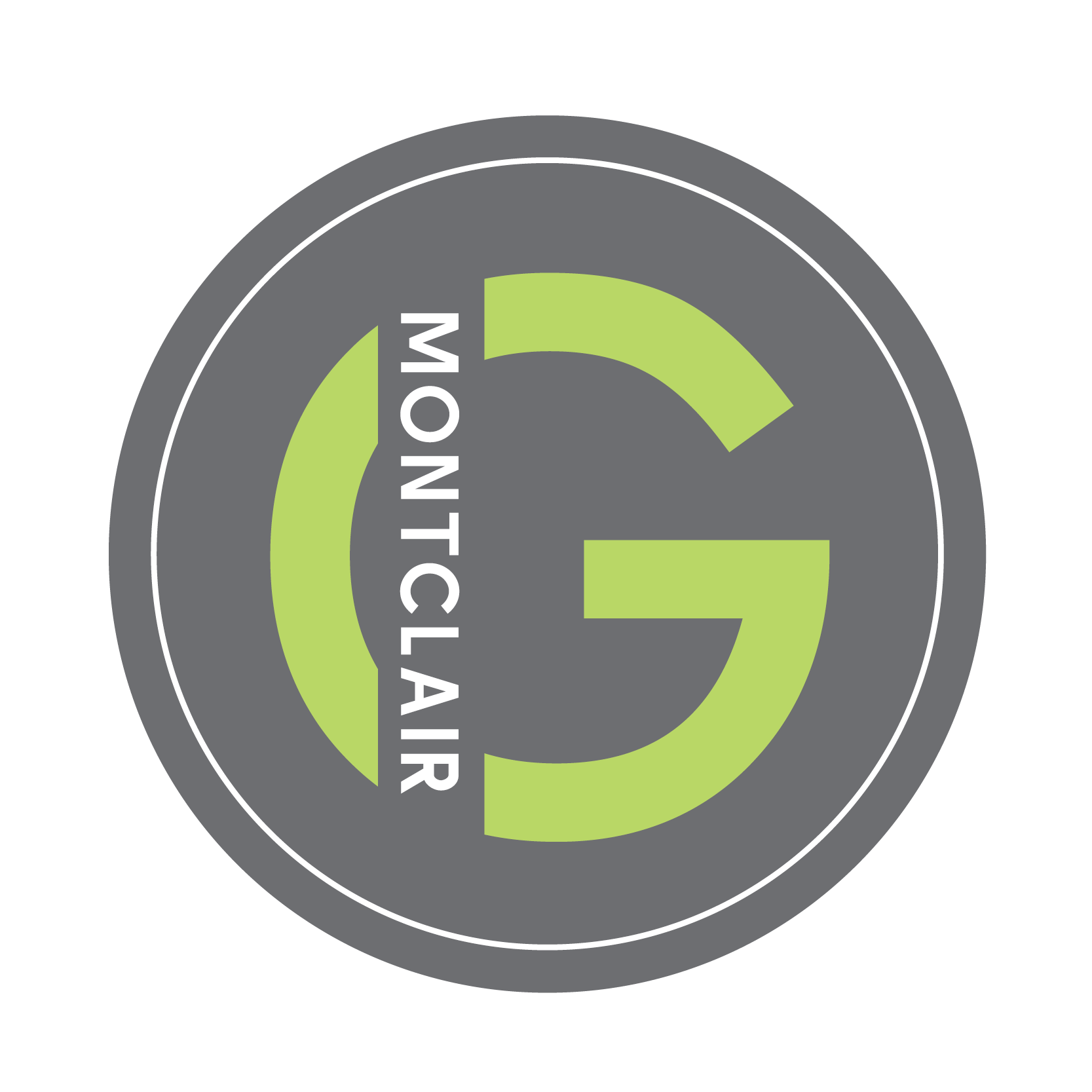At the crossroads of the revolution, New Jersey witnessed much of the American Revolution. Essex County was privy to skirmishes and battles as well as visits from George Washington and Marquis de Lafayette. Hundreds of Essex County men fought and died in the conflict and are buried locally. Many structures and pieces of this history have been lost to the passage of time, but some do remain. Read on for a history lesson on Essex County and the American Revolution.
What Essex County Looked Like During the Revolution
At the time of the American Revolution, Essex County was double the size of what it is now. It contained today’s Essex County, all of what is now Union County, and nearly all of Passaic County. The portions of Passaic County included all of what is now Clifton, Passaic, Little Falls, Woodland Park, and most of Paterson. Essex County was bounded by the Passaic River going North, West, and East. Today it is just West and East.
The colonial governing communities in Essex County were Acquackanonk (present-day Clifton), Newark, and Elizabethtown (present-day Elizabeth). Aside from these three, other communities from the Colonial Period in present-day Essex County included the Mountain Society, Wardsesson, Pleasantdale, Cranetown, Speertown, Second River, Stone House Plains, Horseneck, and Williamstown.
Read More: The Details of Belleville’s Chinese History
How Many People Lived in Essex County?
A 1745 Census of NJ shows 6,988 residents, 454 of whom were enslaved. By 1790, this number had risen. 17,785 people lived in Essex County. 1,171 of these individuals were enslaved and 160 were free Blacks. Most of the European inhabitants of present-day Essex County during the colonial period were of either English or Dutch ancestry with a few French Huguenots. There were enslaved people too, who lived in both Dutch and English settlements. During the Revolution at least 35 (20 from present-day Essex County) enslaved people escaped to Canada as Black Loyalists in hopes of freedom. There were most likely no Native Americans in Essex County during the revolution. Most if not all Lenape had left the area by 1761, but other accounts believe it to be 1801 with the death of Chief Tuscan.
Did Anyone From Essex County Sign the Declaration of Independence?
Five representatives from New Jersey signed the Declaration of Independence. One, Abraham Clark, hailed from Essex County. He was born in Elizabethtown, in present-day Union County, and later in life became a high sheriff for Essex County.
Did Any Battles Take Place in Essex County?
Battles that took place in Essex County included the Battle of Short Hills or Metuchen Meetinghouse, the Battle of Connecticut Farms, and the Battle of Springfield. These all occurred in present Union County. Small battles and skirmishes did take place in present-day Essex County such as the Battle of Second River, Battle of Watsessing, and Battle of Peck Hill.
Belleville
Reformed Dutch Church + Churchyard of Second River | 171 Main Street
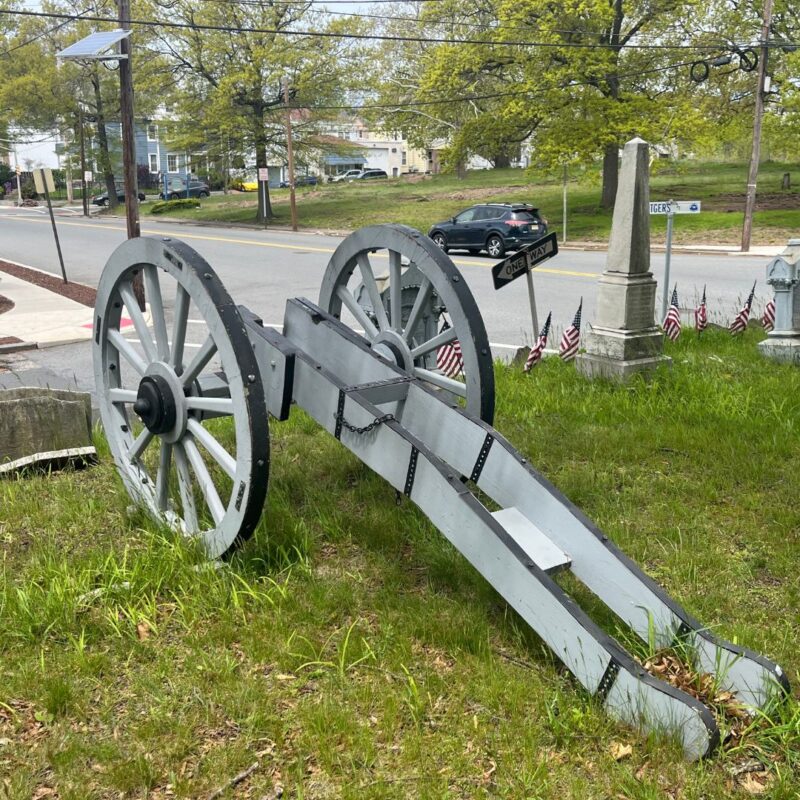
The Reformed Dutch Church of Second River, also known as the Belleville Dutch Reformed Churchyard was built in 1697, with the congregation most likely forming in 1675. During the revolution, the church steeple was used as an observation point to watch for British troops. This came in handy in 1777 as the British encroached on Essex County and the Battle of Second River broke out. Over 60 soldiers from the war are buried in the adjacent churchyard.
Retreat Route 1776 Signs | Main Street Near Rutgers Street
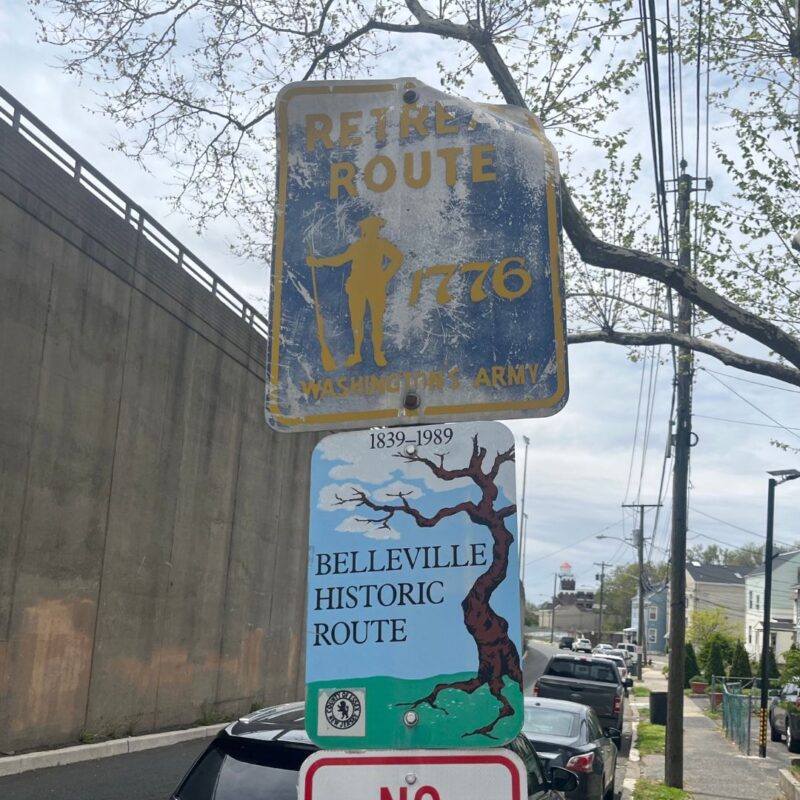
In November 1776, British troops invaded New Jersey from New York forcing the Continental Army to flee from their camp at Fort Lee. During their twelve-day retreat, the troops passed through much of NJ including Second River (present-day Belleville). They would continue on to Trenton and then into Pennsylvania. To commemorate this there are two “Retreat Route 1776” signs on Main Street in Belleville. One is near the Reformed Dutch Church of Second River and the other is across from it.
Rose Cottage | 221 Main Street
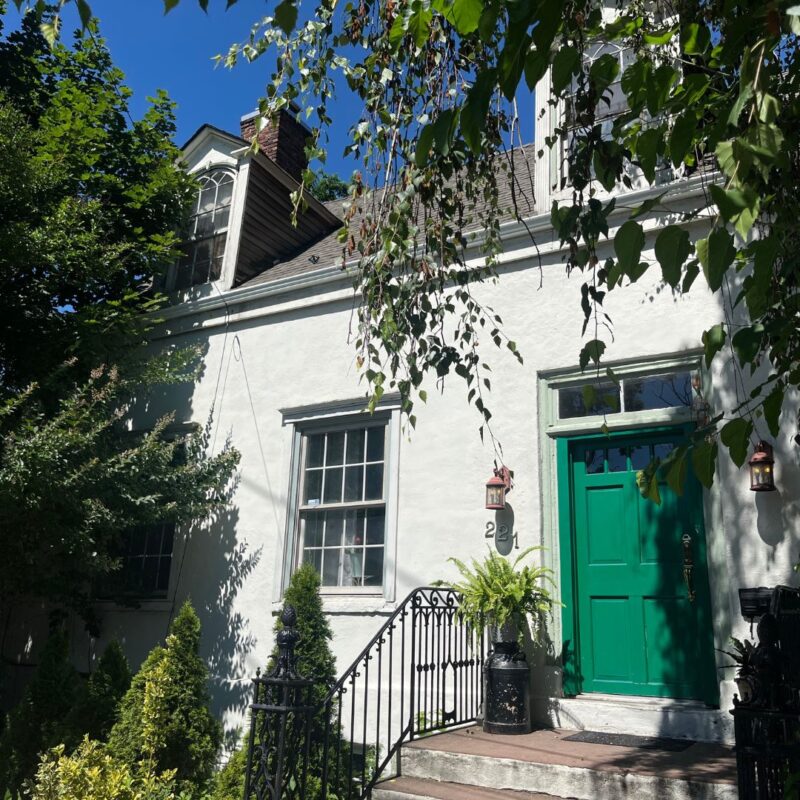
The Rose Cottage, also known as the Lloyd House, was built around 1727. This home initially served as the parsonage for the Dutch Reformed Church of Belleville. During the revolution, British soldier George W. Brown was kept prisoner in the home.
Bloomfield
Bloomfield Cemetery | 383 Belleville Avenue
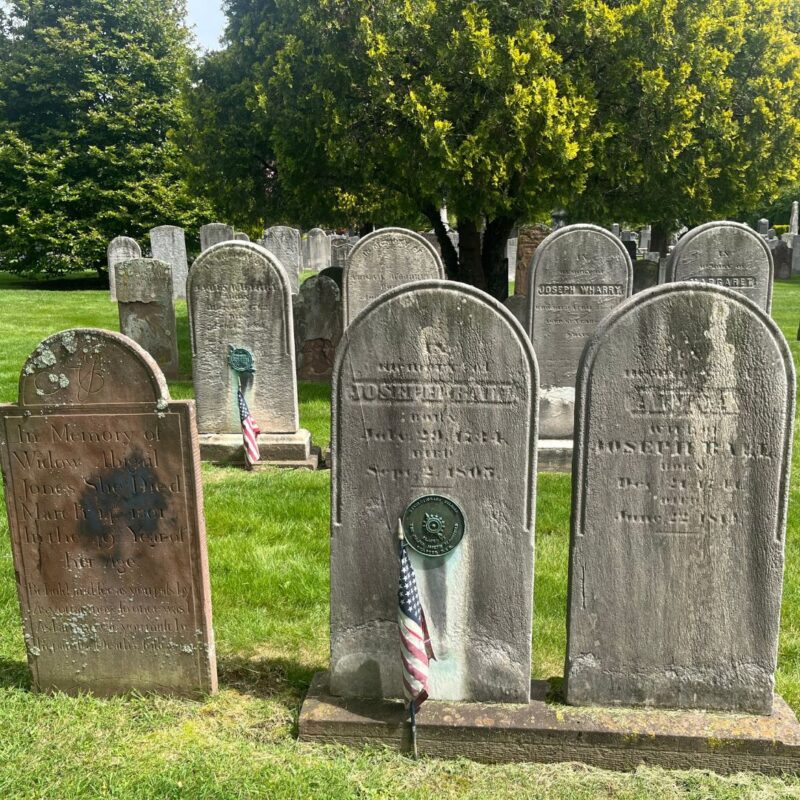
Bloomfield was part of Newark until 1812 when it was officially changed to honor Revolutionary War veteran and governor Joseph Bloomfield. The cemetery is the final resting place for thirty-two American soldiers who fought for independence, including Thomas Cadmus. The Major Joseph Bloomfield Chapter of DAR placed plaques on these graves to ensure the men will always be known for their bravery.
Captain Thomas William’s Plague | 59 Dodd Street
This plaque commemorates Captain Thomas Williams’ company of the Second Regiment of the Essex Company Militia, who fought the British at Watsessing in 1777 during the Battle of Second River. It also includes a passage describing the incident from the Diary of Jemima Condict. Condict was a local girl from the Pleasantdale section of present-day West Orange who documented her teenage years, much of which coincided with the war.
Joseph Bloomfield Monument | Town Green Corner of Broad Street + Liberty Street
During the war, Joseph Bloomfield served as a Captain in the Third New Jersey Regiment rising to Major. He was wounded in 1777 at the Battle of Brandywine but would fight again the following year at the Battle of Monmouth. He would go on to serve as state Attorney General, Mayor of Burlington, Governor, and House Representative. He also served in the War of 1812. In 1796 a local Presbyterian congregation built their church naming their parish the “Presbyterian Society of Bloomfield” to honor him. The following year he would visit, making a speech and a donation to the parish. In 1812, the township of Bloomfield, created from a portion of Newark, was named in his honor as well.
Old Joseph Davis House | 409 Franklin Street
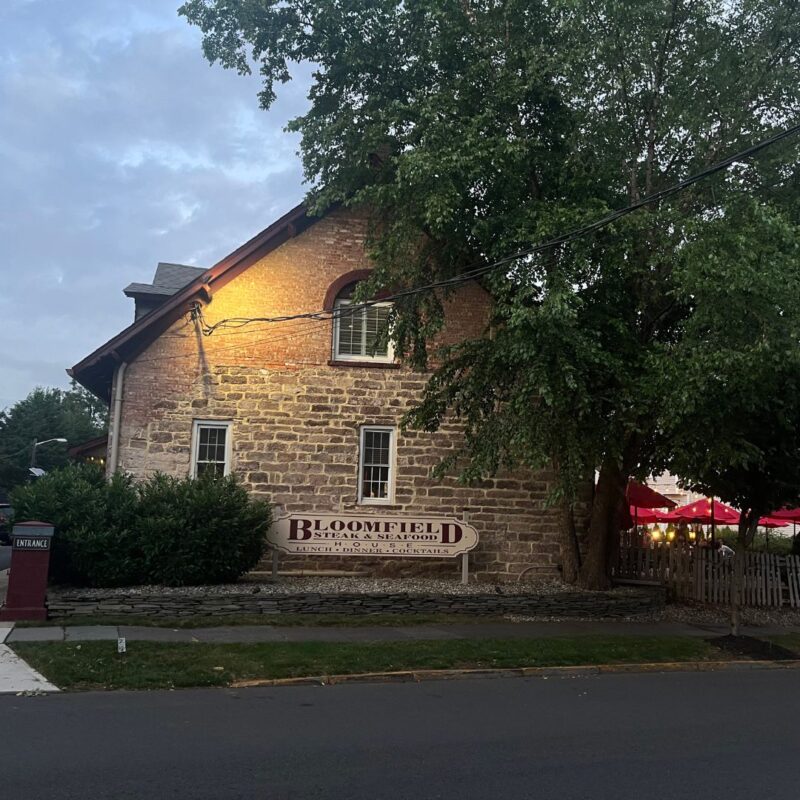
If you’ve ever wanted to eat where George Washington ate, then the Bloomfield Steak + Seafood House is the place to go. Built in 1676 by Thomas Davis, this home remained in the family until 1903. The structure has served as a private residence, farmhouse, hospital, church, and is currently a restaurant. Both George Washington and Henry Knox visited and dined in the home on their way to Morristown. This is also the home where townsfolk met and decided to name this section of Newark “Bloomfield,” after General Joseph Bloomfield.
Thomas Cadmus House | 223 Ashland Avenue
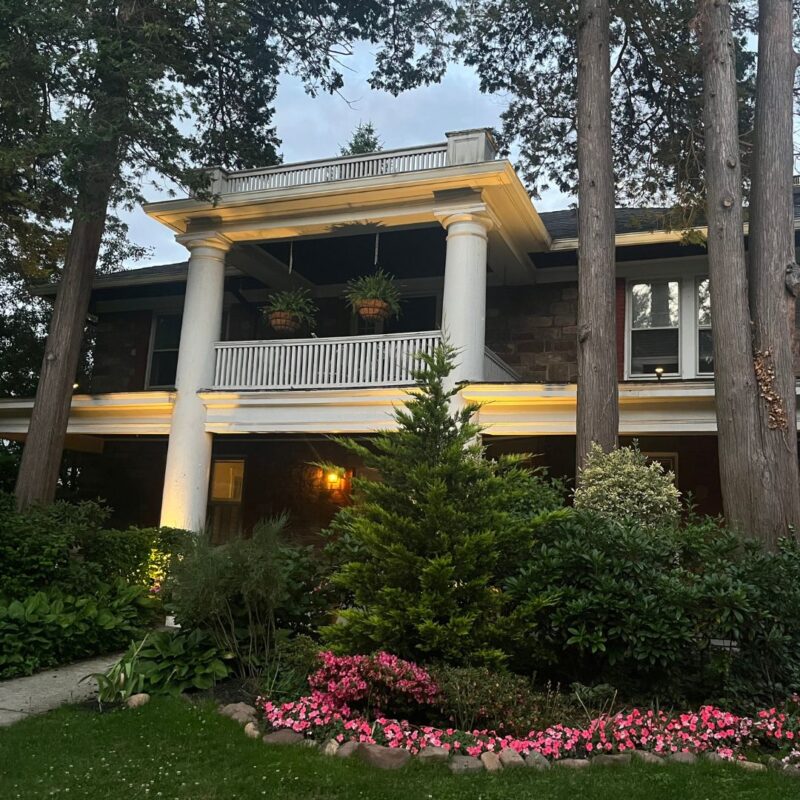
Thomas Cadmus was born in 1736 to Geertie Bras and Abraham Cadmus. He was one of the few New Jerseyans of Dutch descent living amongst English settlers. He served as a Lieutenant Colonel in the Essex County militia during the Revolutionary War. It is believed that George Washington may have stopped at this residence. A plaque outside the house, which Cadmus built in 1763, states that Washington visited it on July 9, 1778, after the Battle of Monmouth as he made his way to New York. In 1915 the original structure was demolished and rebuilt using stones from the original structure.
Caldwell
Old Burying Ground of Caldwell | 326 Bloomfield Avenue
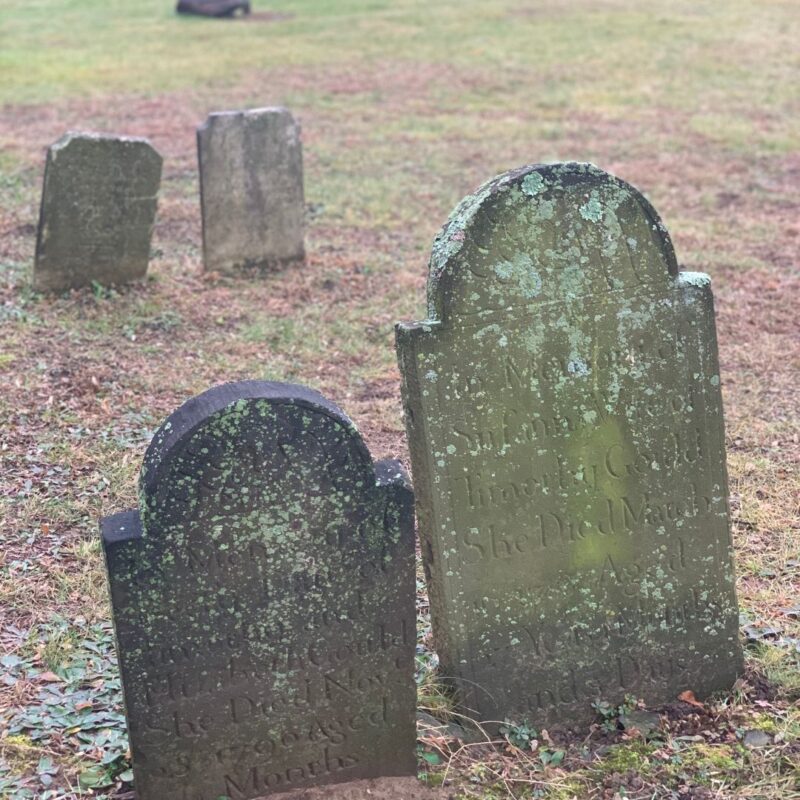
Caldwell was known as Horseneck until 1787 when the local congregation voted to change the name to honor Reverend James Caldwell. The late James Caldwell not only pushed for the parish’s formation, but he was also a soldier in the Revolution. Both James and his wife Hannah died during the war leaving their nine children to be raised by family friends. The Old Burying Ground adjacent to the Presbyterian Church of Caldwell contains the graves of twenty-four Revolutionary War soldiers all of whom survived the war.
Maplewood
Ezekial Ball House | 250-254 Elmwood Avenue
The earliest portion of the Ezekial Ball House is believed to have been constructed in 1694 for William Camp. Around 1750, Ezekial Ball added a two-story addition to the house. During the Revolution, the home was used as a hospital for wounded soldiers.
Millburn
Hessian House | 155 Millburn Avenue
This house, built in 1730 by the Smith Family is nicknamed the Hessian House because it is believed that two Hessian soldiers that deserted during the Battle of Springfield hid here.
White Oak Ridge Cemetery | Parsonage Hill Road + White Oak Ridge Road
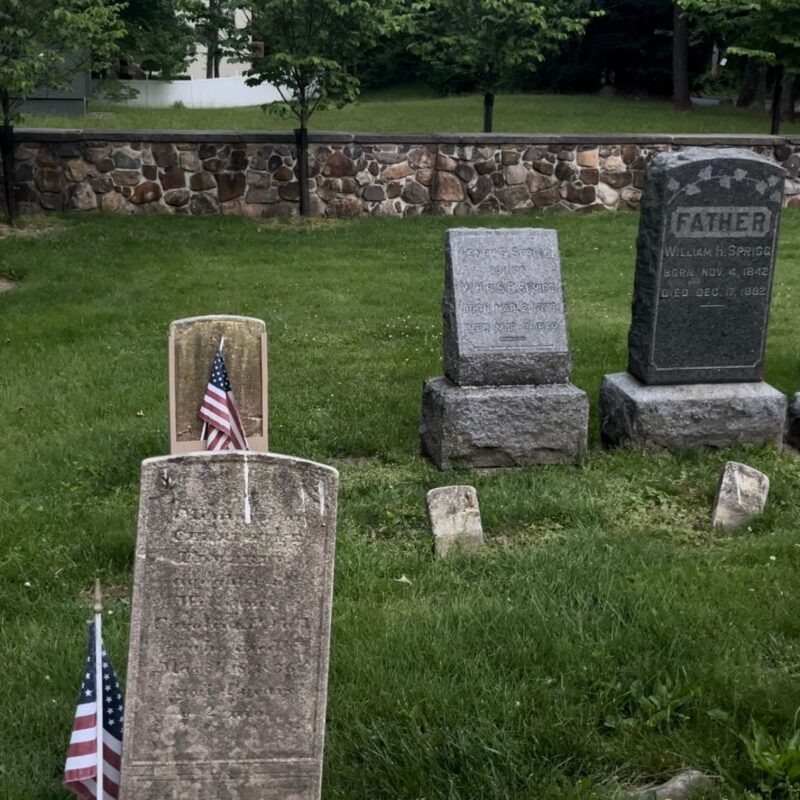
Comprising roughly 35 graves, this small family cemetery also contains the remains of two Revolutionary War soldiers. Buried at the White Oak Ridge Cemetery also known as the Parsil Family Cemetery are Captain Thomas Parcell and his brother Nicholas who died in 1778 and 1780, respectively. Thomas was wounded at the Battle of Connecticut Farms. He was brought home and later succumbed to his wounds. This home was located at present-day 423 White Oak Ridge Road but was unfortunately razed in March 2011. In 1957 the cemetery was restored by the Short Hills Chapter of DAR and the Millburn Shade Tree Commission. It was restored again between 2012-2015 by the Rolling Hills Garden Club and the Township of Millburn.
Montclair
Lafayette Marker | Next to 551 Valley Road on the Corner of Claremont Avenue
In October 1780 Marquis de Lafayette left their encampment in Hawthorne and headed for Cranetown (present-day Montclair). After three days they headed for Elizabethtown (present-day Elizabeth) where they planned to board ships and sail for Staten Island. However, the ships never arrived and Lafayette and his troops turned back toward Cranetown. In 1938 the Eagle Rock Chapter of DAR erected a plaque for what is traditionally believed to be the doorstep of the home Lafayette used as his Cranetown headquarters.
Newark
Battle of Second River Monument | Inside the Branch Brook Park Where Mill Street intersects with Branch Brook Park Drive
In September of 1777, British troops under General Henry Clinton invaded North Jersey. They marched toward the Schuyler Mansion in Bergen County making camp there. From here they could see Second River and fired their two cannons into the town. Those in the steeple of the Dutch Reformed Church rang the bell calling for the Second Essex Regiment to come to the town’s defense. Soon more soldiers would arrive to join the fight. The increase of soldiers concerned Clinton causing him to call for additional troops. At least 1,500 men marched northward from Elizabethtown (present-day Elizabeth) to join the British front.
Now the Americans were outnumbered and retreated westward toward present-day Mill Street where the monument in Branch Brook Park sits. On the morning of the 13th, the British advanced on the Americans and they fled into Watsessing (present-day Bloomfield). Clinton planned to surround them here and waited for more troops to arrive. However, after receiving intelligence, he changed his plans and at dawn on the 14th the British troops marched toward Bergen County instead. In total, the battle cost two American soldiers their lives, one of which was Stephen Ward.
Trinity Church | 608 Broad Street
During the war, both sides used the church as a hospital. The conflict heavily damaged the structure and in 1810 it was replaced with the current edifice. It is now known as Trinity and Saint Paul’s Cathedral.
Nutley
Van Riper House | 491 River Road
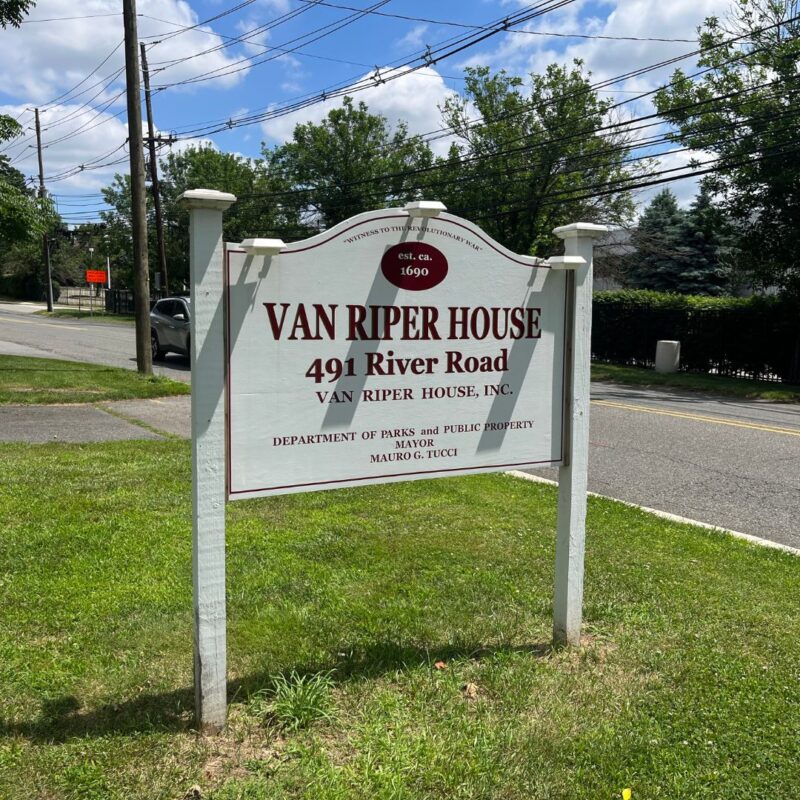
The Van Riper House, Nutley’s oldest home, was built in 1708. During the war, it was home to Private John Abraham Van Riper of the Essex County militia. As George Washington and the Continental Army retreated from Fort Lee in November 1776 they passed by this home.
Vreeland Homestead | 216 Chestnut Street
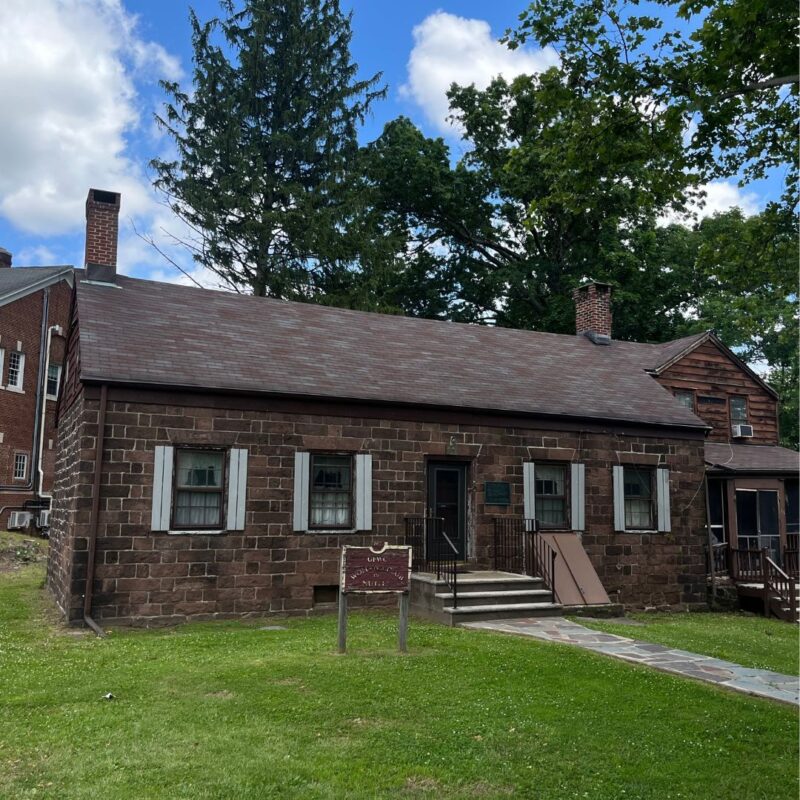
The Vreeland Homestead was built around 1751 by Hendrick Van Giesen. A plaque erected in 1935 states that the home was inhabited by British sympathizers and thus confiscated by Patriots and then acquired by Captain Abraham Speer of the Second Regiment in the Essex County Militia. However, this history is believed to be incorrect as the property was legally sold by Hendrick’s brother to Speer in 1783.
Orange
First Presbyterian Church of Orange + Old Burying Ground | 420 Main Street
The First Presbyterian Church of Orange played a significant part in the war. Reverend Jedediah Chapman openly preached for independence and served as an army chaplain. His outspokenness and influence on the area made him a threat to the British who made several attempts to capture him. The current edifice was constructed in 1927 and while it did not exist during the war, the adjacent graveyard did. In 1777, British soldiers camped at the Old Burying Ground. Seventy-eight soldiers of the American Revolution are buried here as well as two notable women — Mary Pierson Williams and Jemima Condit.
Jemima Condit Grave | 420 Main Street
Jemima Condit grew up in the Pleasantdale area of present-day West Orange. She kept a diary of her teenage years, much of which detailed the war and included passages about Reverend Jedediah Chapman and the Battle of Second River. In 1779 she was buried in the Old Burying Ground at the First Presbyterian Church of Orange. The Jemima Cundict Chapter of DAR erected a plaque on her gravestone in 1938. You can read the diary here.
Mary Pierson Williams Grave | 420 Main Street
Mary Williams, her husband Nathaniel, and their six children lived in the Williamstown area of present-day West Orange. In 1777, Nathaniel and his two oldest sons Amos and James joined the British in New York, but Mary could not betray her conscience and stayed in Williamstown. She never saw her husband or Amos again, but fortunately was reunited with James. In 1816 she was buried in the Old Burying Ground at the First Presbyterian Church of Orange. The Mistress Mary Williams Chapter of DAR erected a plaque on her gravestone in 1934.
Verona
Priest Farm House | 110 Claremont Avenue
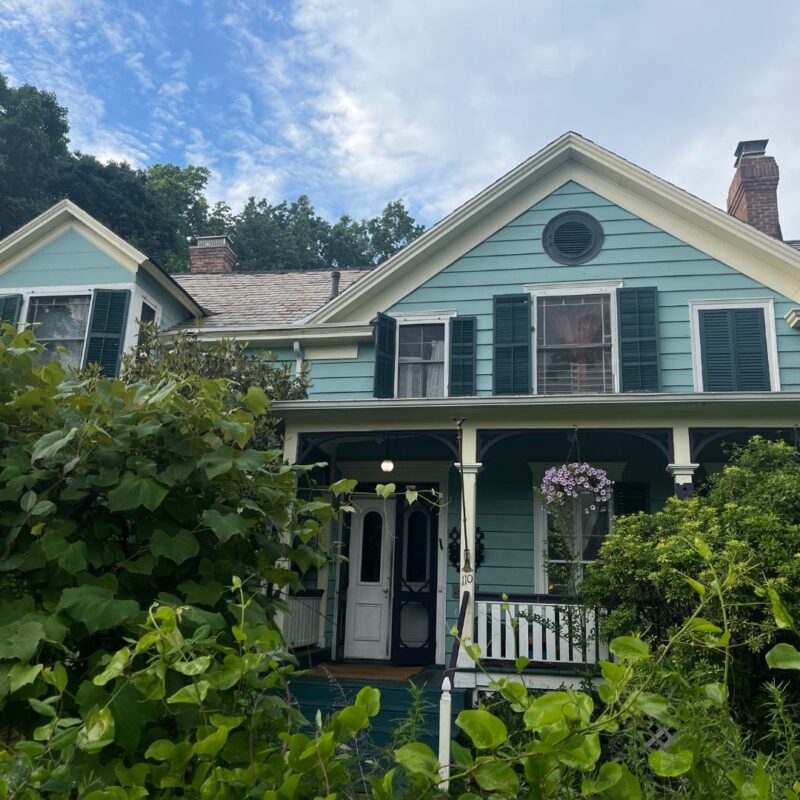
Located in the proposed Claremont Avenue Residential Historic District, the Priest Farm House is one of Verona’s few extant homes predating the 19th century. Constructed around 1750, this home has been skillfully preserved. Many believe that George Washington and Marquis de Lafayette passed by the home on their way from Cranetown (present-day Montclair) to Morristown during the Revolution.
See More: The Stories Behind Old Hoboken Signage
West Orange
Mary Williams Home Boulder + Roadside Marker | 179 Eagle Rock Avenue + 2 Mississippi Avenue
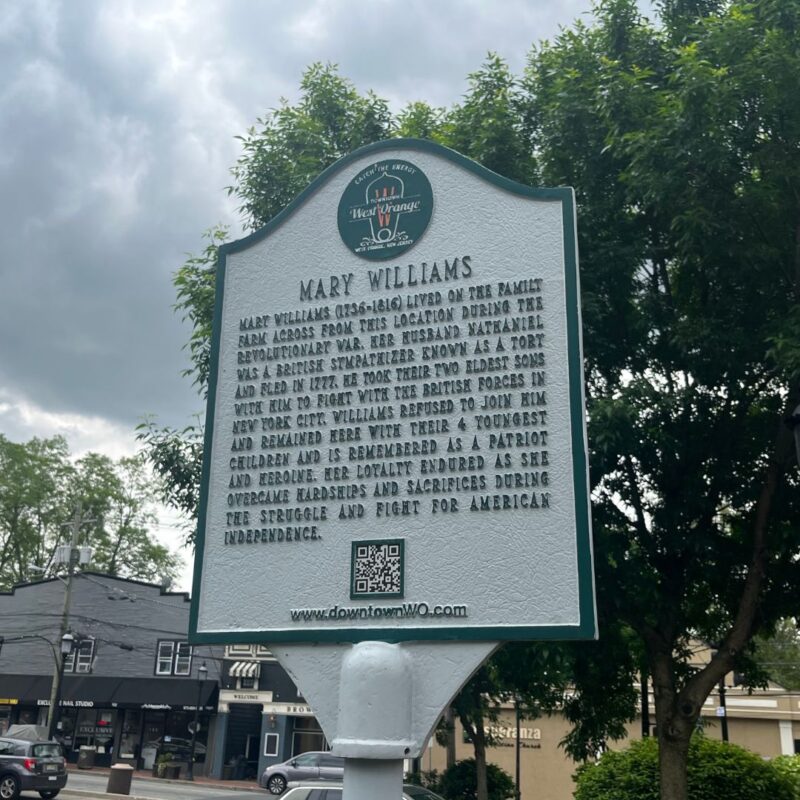
In 1926, a plaque was erected to mark the nearby home of Mary Williams. Built in 1720, the structure remained until 1822 when it was razed by Mary’s son Zenas who built a new home. The plaque has been missing since 1974, but the boulder remains. In 2016 The Downtown West Orange Alliance installed a new marker commemorating the story of Mary Williams. It sits across from where her home stood all those years ago.
Tory Corner Monument | Corner of Washington Street + Main Street
During the 1770’s British Loyalists commonly met at this area of Williamstown awarding it the name Tory Corner. In 1976 the Tory Corner Business Association erected a monument here summarizing the story of Mary Williams and her husband, as well as his brother Benjamin.

